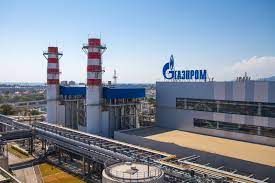Gazprom, Russia’s energy company, has expressed readiness to partner African countries on gas infrastructure and technology.
Mr Dimitry Stratov, Deputy Director-General, Prospective Development, Gazprom, Dobycha Nadym, said this while briefing some African journalists and experts on Wednesday shortly before a tour of the company’s facilities.
Stratov said the company would not apply for license but was willing to go into partnership with African countries to develope gas infrastructure.
Gazprom, a state-owned energy corporation with sales of over 120 billion dollars, is ranked as the largest natural gas company in the world and the largest company in Russia by revenue.
Stratov said Gazprom was established in 1971 by the order of the Russian Ministry of Gas Industry No. 116 with14 branches.
In his presentation on the “Gas Heart of the Arctic” he dwelt on the company’s gas production in Bovanenkovskoye oil, gas and condensate facilities which he said comprised 18 fields, accounting for 20.4 trillion cubic metres of gas and one billion tons of gas condensate and oil.
The journalists and experts were conducted round the Bovanenkovskoye field by Stratov and other officials of the company.
The Bovanenkovskoye field is located in the Northwestern part of Yamal Peninsula, beyond the Arctic circle, spanning 1,780 square kilometres.
The field has an airstrip, motorable roads, power plants, gym centre, shift camps, industrial facilities, medical complex, othordox church and sport facilities.
Related Articles
It has about 1,500 employees with rotational work models.
The initial reserves of the field, which rank among the top ten largest fields in the world, are estimated at 4.9 trillion cubic metres of gas.
The field has three gas production facilities, a total of 700 operational wells, 12 booster compressor stations for ensuring required gas pressure level before being fed into gas transmission system.
Stratov said the active construction phase of the field began in 2008, followed by commissioning of three gas production sites in 2012, 2014 and 2018 respectively.
He said the oil, gas and condensate field would continue gas production until 2128.
The field also has two gas treatment and control stations/conditioning units, with the capacity to process 40 billion and 60 billion cubic metres of gas per annum.
Speaking with journalists, Alessandra Isaev, Gas Conditioning Master, Gazprom, said all technological processes were controlled and automated in the control room including separation of gas from underground water from mechanical impurities.
The journalists were also exposed to how gas is transfered from the well cluster to the processing and seperation units, centre compressor, pumping system powered by 16 megawatts aeroplane engine as well as adjustment of gas pressure.
The journalists who also visited some infrastructure and social facilities were issued certificates for crossing the Arctic Circle.





